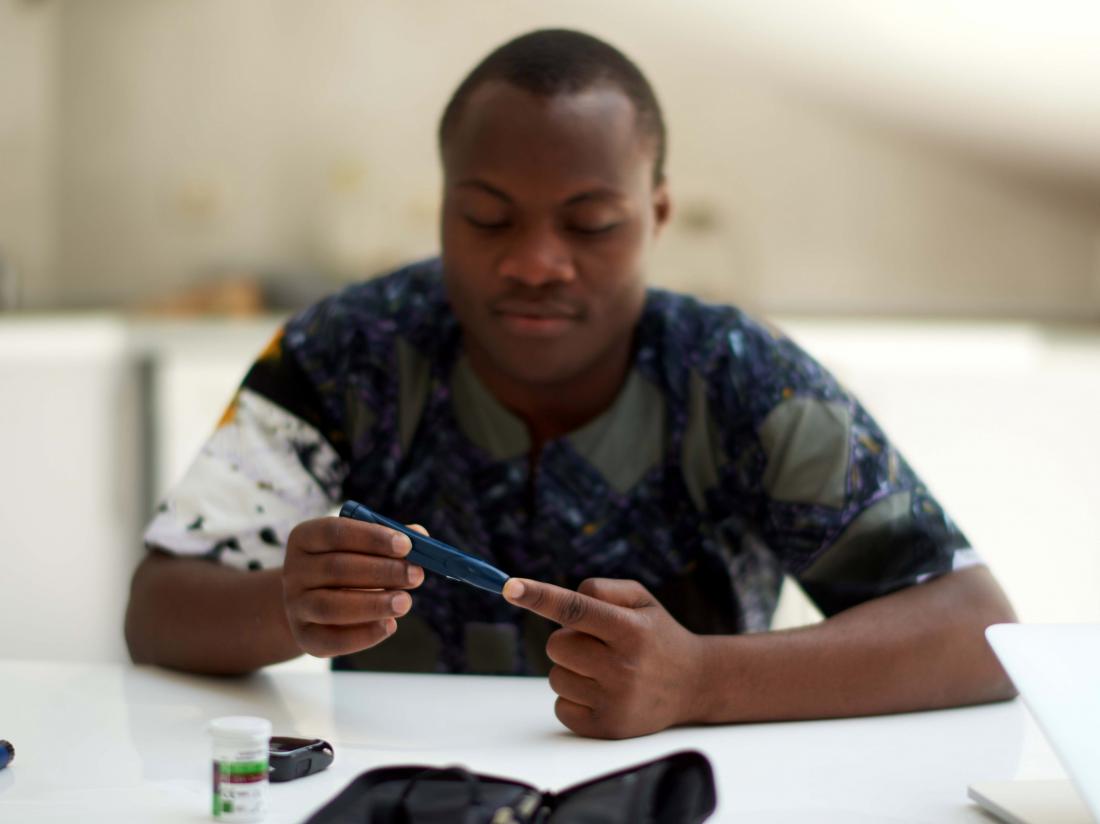Glycosuria is a common symptom of both type 1 diabetes and type 2 diabetes.
Renal glycosuria occurs when a person’s kidneys are damaged. It is a rare condition that develops when a person’s blood sugar levels are normal, but the kidneys are unable to retain glucose. As a result, the sugar spills into the urine in increased amounts.
This article discusses the symptoms, causes, and treatments of glycosuria and its relationship with diabetes.
What is glycosuria?

A person with glycosuria may experience nighttime, accidental, and more frequent urination.
Usually, the urine does not contain sugar. This is because the kidneys reabsorb it from the blood as it passes through the body.
Glycosuria occurs when the urine contains more glucose than it should.
When there is too much glucose in the blood, the kidneys may not be able to reabsorb it all. When this occurs, the body excretes the glucose from the body through the urine. For this to happen, the blood sugar concentration usually has to exceed 180 mg/dl (10 mmol/L).
Sometimes, glycosuria can occur when a person has normal or even low levels of blood glucose. This suggests renal glycosuria, which is a problem with how the kidneys are functioning. Sugar may enter the urine in isolation or with other substances, such as amino acids and uric acid.
An example of this condition is Fanconi syndrome, an acquired or genetic condition that involves the excretion of excess substances through the urine.
People with normal blood sugar levels but who are taking SGLT-2inhibitors, such as Invokana and Jardiance, for a particular type of diabetes, might also have glucose in the urine.
Symptoms
A person can go for extended periods without experiencing any symptoms of glycosuria. A urine test can reveal that a person has glycosuria before a person realizes they have it. In many cases, this is a red flag for previously undiagnosed diabetes.
Doctors measure how much glucose is in the urine by testing a urine sample.
If undiagnosed and untreated, glycosuria may cause the following symptoms:
- extreme hunger
- extreme thirst or dehydration
- accidental urination
- more frequent urination
- nighttime urination
A person with diabetes may experience additional symptoms. These include:
- fatigue
- vision trouble
- minor cuts and abrasions that take a long time to heal
- unexplained weight loss
- darkening skin near armpits, neck, or other areas where the skin tends to fold
Gestational diabetes may present similarly to type 2 diabetes. However, it is often asymptomatic and detected through routine screening during pregnancy.
A person should talk to their healthcare provider if they experience unusual symptoms.
Causes
Conditions that affect blood sugar levels are typically responsible for glycosuria. The most common underlying causes of glycosuria are type 1 and type 2 diabetes.
Type 2 diabetes

Diabetes is the most common cause of glycosuria.
When a person has type 2 diabetes, their pancreas does not create enough insulin or the insulin becomes ineffective. As a result, the body is unable to control glucose levels well. When the blood sugar spikes, it can cause blood glucose to enter the urine, causing glycosuria.
Type 1 diabetes develops due to progressive destruction of specific cells in the pancreas, which results in decreased insulin production. When there is not enough insulin in the body, it is unable to control sugar levels. People with type 1 diabetes require daily treatment with insulin to manage these levels.
Gestational diabetes
During pregnancy, a woman may have glucose in her urine. This is because the kidneys allow more glucose to leave the body during pregnancy. This means that glycosuria is not a suitable method for diagnosing gestational diabetes. Instead, doctors diagnose gestational diabetes using blood tests.
Kidney disease
Renal glycosuria is a genetic or acquired condition. It occurs when damaged kidneys are unable to filter sugar or other substances out of the urine properly.
Treatments
If a person’s glycosuria is due to an underlying condition, such as diabetes, they should work with their doctor to develop a treatment plan.
Possible treatment options for diabetes include:
- changing the diet to include more fresh vegetables and fruits, whole grains, and lean proteins
- doing regular exercise
- taking oral or injectable medications for type 2 diabetes
- injecting insulin daily for all people with type 1 diabetes and some people with type 2 diabetes
- tracking blood sugar levels to understand how food, therapies, and activity affect them
Once a person has regulated their blood sugar levels, glycosuria should no longer occur.
Learn about how to treat diabetes and diabetes self-management tips here.
Pregnancy

Exercising regularly can help reduce the risk of diabetes.
According to the International Diabetes Federation, gestational diabetes affects approximately 16.2% of pregnant women. The prevalence varies among different racial and ethnic groups.
Gestational diabetes and glycosuria will clear up after pregnancy ends. However, a person is more likely to develop type 2 diabetes later in life if they have had gestational diabetes.
Because of this, people should take steps to reduce the risk of type 2 diabetes, such as taking regular exercise, eating a balanced diet, and maintaining a healthy weight.
Summary
It is not always possible to prevent glycosuria, but by itself, it is typically not a major cause for concern. Instead, a person’s healthcare provider will look to treat the underlying condition, such as diabetes or kidney problems.
Although it is not possible to prevent type 1 diabetes, people can sometimes prevent type 2 diabetes by limiting their sugar intake, eating a balanced diet, exercising regularly, and maintaining a healthy weight.
